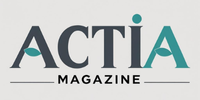Canada’s big tax relief for middle-class Canadians officially took effect on July 1, 2025, offering much-needed financial breathing room amid rising living costs. With inflation, housing prices, and daily expenses continuing to challenge Canadian households, this newly introduced federal measure is designed to lower the income tax burden on millions of working Canadians.
Here’s a detailed look at what’s changing, who benefits, and how much you could save under the new tax relief plan.
Table of Contents
What is Canada’s Big Tax Relief for Middle-Class Canadians?
This federal tax relief policy is aimed at reducing the amount of income tax paid by middle-income earners, beginning in the 2025–2026 fiscal year. It includes key changes to marginal tax brackets, basic personal amounts, and deductions, with the goal of putting more money back into Canadians’ pockets.
The initiative was first announced as part of the 2025 federal budget and is now fully in effect as of July 1, 2025.
All CRA Benefit Payments Schedule July 2025: OTB, GST, CCB, CPP, OAS, GIS, & More
Key Tax Changes Effective July 1, 2025
1. Increased Basic Personal Amount (BPA)
- The Basic Personal Amount — the income level up to which you pay no federal tax — has increased from $15,705 to $16,600.
- This change means more of your income is tax-free, reducing your overall federal tax bill.
2. Adjusted Tax Brackets
- The second federal income tax bracket (15% to 20.5%) now applies to income up to $57,000, increased from the previous $55,867 threshold.
- This adjustment ensures that more income remains taxed at the lowest federal rate of 15%.
3. Enhanced Canada Workers Benefit (CWB)
- The CWB has been enhanced for 2025, offering up to $1,633 per worker and $2,616 per family.
- This refundable tax credit directly supports low- and modest-income workers and is issued through regular CRA direct deposits.
4. Increased Tax Deductions for Families
- Enhanced Child Care Expense Deduction and a modest increase in the Canada Child Benefit (CCB) also came into effect, offering more relief for parents.
New Canada Disability Benefit Launches July 2025 — Here’s How to Apply and How Much You Could Get
Who Benefits the Most?
The changes primarily target middle-income Canadians — individuals earning between $35,000 and $100,000 per year. According to Finance Canada projections:
- A single worker earning $50,000 will save an average of $430 per year in federal taxes.
- A dual-income household with two children and combined earnings of $90,000 could see up to $1,100 in combined tax relief and benefit increases annually.
- Seniors receiving Old Age Security (OAS) and low to moderate retirement income will also benefit from reduced tax payable on pensions and OAS clawback thresholds increasing.
GST/HST Canada Credit July 2025: Who Qualifies, Payment Dates, and How Much You’ll Get
How Will You See the Savings?
Tax savings from the new changes will show in the following ways:
- Lower tax deductions on each paycheck beginning July 2025
- Reduced withholding taxes on CPP and OAS payments for eligible seniors
- Smaller tax bills or larger refunds when filing your 2025 income tax return in spring 2026
You can also log into your CRA My Account to view updated benefit entitlements and tax credits reflecting the July changes.
Timeline and Payment Schedule
- The tax relief changes took effect July 1, 2025.
- Workers will start seeing larger take-home pay on July payroll cycles.
- Enhanced Canada Workers Benefit and other credits will continue to be issued on their regular CRA payment schedules (typically monthly or quarterly).
Summary: What This Means for You
| Tax Change | Impact |
|---|---|
| Basic Personal Amount → $16,600 | More income is tax-free |
| Bracket threshold raised to $57,000 | More income taxed at 15% |
| CWB increased | Up to $1,633 per individual |
| Enhanced child & family benefits | More deductions, larger CCB |
| Payroll deductions lowered | Bigger paycheques post-July 1 |
Final Thoughts
Canada’s big tax relief for middle-class Canadians, effective July 1, 2025, marks a meaningful step toward easing the financial strain on working families and individuals. Whether through higher take-home pay, reduced tax bills, or enhanced benefits, this tax policy offers real, tangible support in a time of high costs and economic uncertainty.

